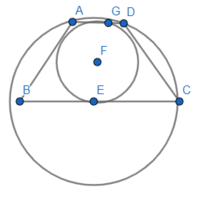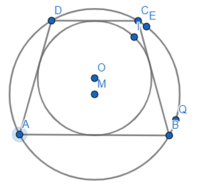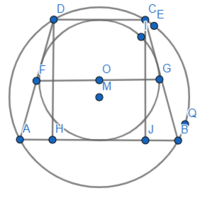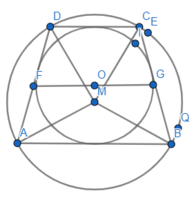Could You help me also with these 2 problems, please?
1. The bisectors of the obtuse angles of the trapezoid intersect on the large base in point M. Find the sides of the trapezoid, if the bisector of angle D is equal to 13 cm, the bisector of angle C is equal to 15 cm, and the heights of the trapezoid are12 cm.
2. The trapezoid ABCD WITH BASES AB = 3 cm AND CD = 1 cm IS GIVEN. A CIRCLE CAN BE ENTERED AND DESCRIBEDI around IT. FIND THE FACE OF THE DESCRIBED CIRCLE.
**for the first problem I can find the base H2M and the base H1M with the Pythagorean theorem and the base CD=H2H1 which is equal to the sum of the bases H2M and H1M(I'm sorry that the second graph is not so accurate )
** for the second problem I assume that if a circle can be entered or described around a trapezoid maybe this means that the trapezoid is isosceles
1. The bisectors of the obtuse angles of the trapezoid intersect on the large base in point M. Find the sides of the trapezoid, if the bisector of angle D is equal to 13 cm, the bisector of angle C is equal to 15 cm, and the heights of the trapezoid are12 cm.
2. The trapezoid ABCD WITH BASES AB = 3 cm AND CD = 1 cm IS GIVEN. A CIRCLE CAN BE ENTERED AND DESCRIBEDI around IT. FIND THE FACE OF THE DESCRIBED CIRCLE.
**for the first problem I can find the base H2M and the base H1M with the Pythagorean theorem and the base CD=H2H1 which is equal to the sum of the bases H2M and H1M(I'm sorry that the second graph is not so accurate )
** for the second problem I assume that if a circle can be entered or described around a trapezoid maybe this means that the trapezoid is isosceles






